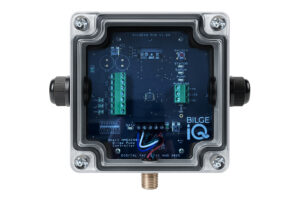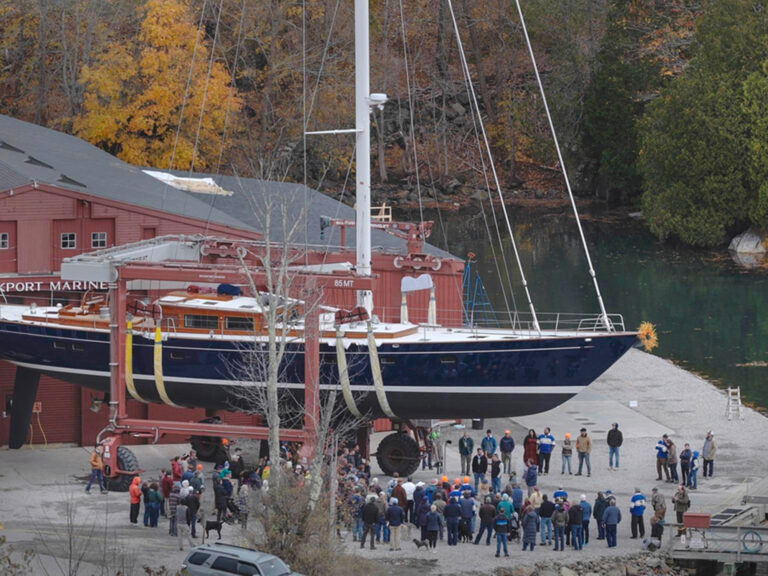If you’ve dreamed about sailing south to the Caribbean (see “Make Your Islands Dream a Reality” in CW’s September 2009 issue), you’ve probably spent a fair amount of time looking at boats that are bluewater ready, so we’ll make the basic assumption that your boat, as designed, is capable of the passage. Now it’s important to make sure that you’ve got it properly rigged to sail hundreds of miles offshore.
Up the Mast
We’ll work from the top down. Your rig is one of the most important aspects of your boat, because you won’t make it without one. Have a complete survey done of your running and standing rigging well before departure time. Anything that’s weak or old should be replaced. That includes shrouds, turnbuckles, halyards, sheaves, blocks, and sheets. Seeking the services of a competent rigger is a must.
Spare halyards should be on board, and you need to have a plan for getting them up the mast and rigged. It’s tough going aloft offshore. If you’ve got only one spinnaker halyard and one jib halyard, find a way to rig a spare. Have two methods for climbing the mast; a comfortable bosun’s chair for calm conditions, and a harness for rough weather. Both should be equipped with pockets and/or attachment points for tools and gear. You should even consider a protective helmet for rough weather.
And finally, before you leave take the time to tape up any potential chafing points, as sails will be up for many hours and days.
On Deck
Deck gear should be surveyed as well, and that includes winches, shackles, turning blocks, sheaves, lifelines, and stanchions. First, consider purchasing a couple of lightweight spare winch handles. There’ll be no chandleries nearby to buy replacements, and trimming sails with out a handle doesn’t go well.
You’ll want to have jacklines rigged between the stern and bow pulpits. Some like shrouded wire jacklines that resemble lifelines, but I prefer flat webbing that won’t roll under foot. Make sure the jacklines are relatively taut and easily adjustable should you need to tighten them while offshore. Tape your lifeline entry point shackles shut so they won’t open accidentally while being whipped by flailing sheets. In fact, tape everything.
One of the more dangerous places offshore can be the companionway, as that’s where sleepy, seasick, and unharnessed crewmembers emerge. Make sure there’s a padeye close to it so crew can attach their tethers to it before getting on deck. Make sure, also, that you have good handholds around the companionway to grab onto, and that the companionway stairs are equipped with a good nonskid surface.
Down Below
Belowdecks will feel safer than being on deck, but many sailors have found out the hard way that it’s nearly as treacherous. Handholds should be within easy grasp from any point down below, and everything should be stowed securely. Floorboards and batteries should be firmly secured in case the boat broaches, and you should also have easy access to all of the boat’s through-hull fittings. Those fittings should also have bungs tied or attached close by in case of a failure that would allow water into the hull. Make a chart of where all the through-hull fittings are located and post it (on laminated paper) where everyone can see it. You’ll also want to make a chart of where all the gear, food, and emergency supplies are located. If the worst happens, you’ll want to get at your repair or safety gear quickly.
A fully stocked first-aid kit, augmented by prescribed drugs for seasickness, and pain, as well as antibiotics should be aboard. One person should be designated as the “doc,” and that person, and more if possible, should have CPR and first-aid training. If you need medications, bring plenty of spares and keep them in the first-aid kit.
If your nav station is close by the companionway, consider rigging a waterproof/lightproof screen to protect it from errant waves. Having it be lightproof is a touch that the night watches will appreciate.
The Nitty-Gritty
Check your rudder bearings and you’re rudder’s overall health. Nothing will sink a boat faster than a rudder-post-size hole in your boat. Also make sure that your steering system is in good shape; lubricate and tighten the wire, rope, chain, or gears and familiarize yourself with how they work and how you’ll fix them if they break. Don’t wait until you’re offshore to see how easy (or hard) it is to ship your emergency tiller. If you have an autopilot, you’ll use it, so make sure it and its associated gear are working properly.
Your engine, and all the levels you need to keep an eye on should also be easily accessible, as you may end up motoring for a while, and keeping your batteries charged and your electronics running is absolutely key. Make sure you have spare impellers for your raw water pump, and that you know how to bleed your diesel before setting out. Learning how to bleed a diesel in a seaway is problematic.
Mind Your Electronics
Your electronics are your lifeline. At the very least you should have a chartplotter and a separate GPS system, and a VHF radio with an antenna as high as possible (and a backup handheld or two). A single-sideband radio is very useful offshore for communication, weather forecasts, weatherfax data, and emergency calls. Satellite phones are a relatively new touch to offshore sailing, but again, incredibly handy for Internet access, communications, and emergency calls. If you don’t want to purchase one, many companies offer rental units. Satellite receivers are great, too, and their antenna domes have gotten small enough for all but the smallest cruisers. Automatic Identification for Ships (AIS) is an inexpensive must, especially if you don’t have radar. There aren’t many watchstanders on commercial ships these days, and they’re not as attentive offshore as they are in coastal waterways. With AIS you’ll be able to avoid ships and, should the need arise, be able to contact them quickly if you’re able to get their MMSI number and call them directly with your DSC-equipped VHF radio.
Many boats now use small computers or laptops for navigation and communication. These computers should be well protected from water, but again, stowed where they’re easy to access. Wireless keyboards and mice are a must, and they’re cheap, so bring a spare or two along. You should also have a handheld GPS or two, with at least one of them loaded with charting for not only your destination, but any place you may be forced to bail out into. If you have the misfortune to be hit by lightning (the odds are far better that you’ll be hit by lightning than the chance you’ll win Powerball, by the way), you’ll want to have some way of figuring out where you are. I like to keep at least one spare GPS in my homemade Farraday cage: a plastic bag, surrounded by tinfoil, wrapped in another plastic bag. Keep the batteries out of the GPS until you need it.
Pack Carefully
For personal gear every crewmember should have these essentials: A good set of breathable foul weather gear, a warm mid layer, and technical underwear that wicks water away from your body. Don’t scrimp on any of this gear, because if you do, and end up cold, wet, and miserable, you won’t be able to carry your load. Every crewmember should also have gloves for line handling, gloves for cold weather, a warm hat, a sunshade hat, a good pair of offshore boots, a good pair of sailing sneakers, waterproof socks, and plenty of sunscreen. For safety gear every crewmember should have a sharp knife, a Leatherman or Gerber tool, a personal strobe or laser light, a bitelight, and, if at all possible, a personal EPIRB. There should also be plenty of charged-up flashlights both above and belowdecks, and lots and lots of spare batteries.
Safety’s a Must
You absolutely must have a life raft, not just your dinghy lashed to the deck. The life raft should be large enough (or larger) than required for the number of crew you have on board. Unless you have a dedicated stowage place on deck designed specifically for a raft, it should be at or near the foot of the companionway, lashed down enough to keep it from sliding around, but not lashed so that it’s too difficult to get it on deck in less than 60 seconds. In addition, you should have a grab bag and water jugs ready to go. In the grab bag should be flares, an EPIRB, food supplies, a handheld VHF, a good first-aid kit, and other emergency supplies.
For a very thorough breakdown for all the preparations you should make, check out the Newport-Bermuda Race website (www.bermudarace.com). The Cruising Club of America runs the biennial race, and through over 100 years of experience, it’s come up with the ideal list of what should be on a boat attempting that 635-mile passage. Every boat that competes in the race must pass a rigorous inspection in order to race. By following the C.C.A.’s requirements, you can be assured that your boat is ready to go.
Tony Bessinger, a veteran of several voyages south, is a seasoned raceboat navigator.








